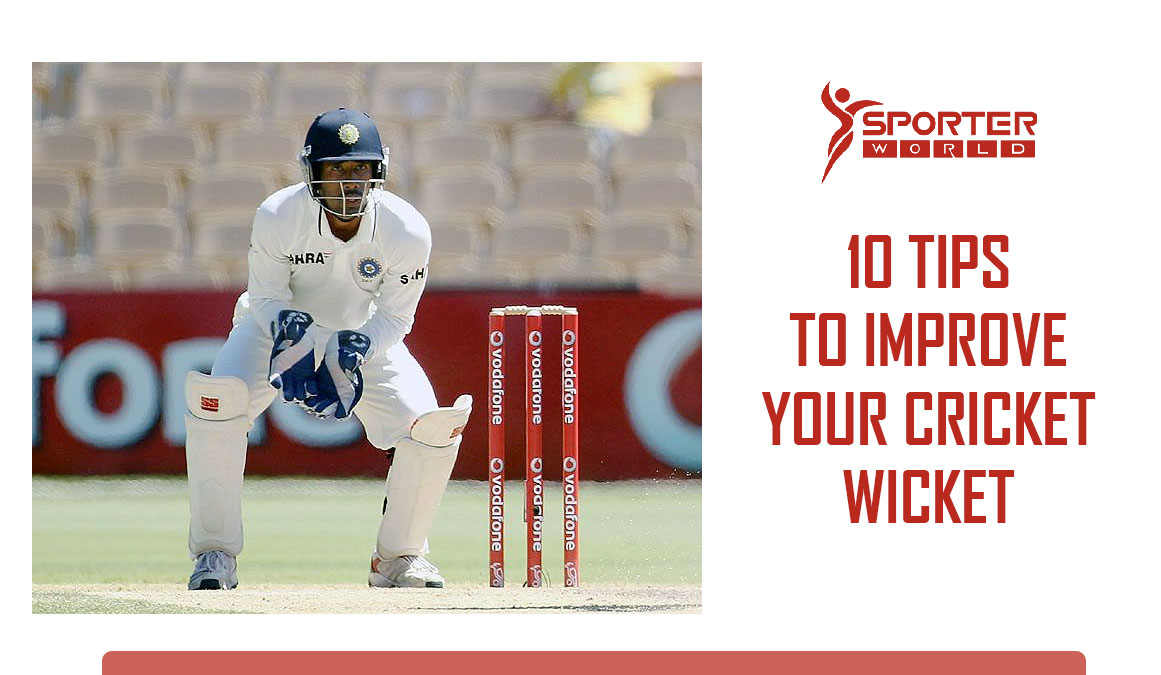The art of cricket field placement and tactics involves strategic positioning to maximize player performance and game outcomes. Cricket is a sport that requires much more than just batting and bowling skills.
Field placement and tactics play a crucial role in influencing the flow of the game and outwitting the opposition. Captains and coaches spend countless hours analyzing the strengths and weaknesses of their opponents, devising strategies to exploit vulnerabilities and limit scoring opportunities.
The position of fielders, the angles they cover, and their proximity to the batsmen all play a part in disrupting their rhythm and forcing them into making mistakes. This article explores the art of cricket field placement and tactics, shedding light on the intricacies involved and the impact it has on the overall outcome of matches.
Understanding The Role Of Field Placement In Cricket
Understanding the role of field placement in cricket is crucial for any team aiming for success. Field placement is an essential part of cricket tactics as it directly impacts the game’s outcome. The importance of field placement lies in the fact that it can influence the batsman’s decision-making and restrict their scoring options, forcing them into making mistakes. Strategies and objectives behind field placement decisions can vary based on the team’s bowling attack, the pitch conditions, and the specific batsman. Proper field placement aims to create pressure, build partnerships among the fielders, and capitalize on weaknesses in the opposition’s batting lineup. It is a combination of understanding the strengths and weaknesses of both the bowlers and batsmen, as well as predicting their shots in different situations. The art of cricket field placement ultimately revolves around optimizing the field positions to outwit the opposition and take advantage of every opportunity.

Credit: www.lizsteel.com
Analyzing The Different Fielding Positions And Their Significance
Field placement and tactics are crucial elements of the game of cricket. Understanding the various fielding positions and their significance is essential for teams to strategize and maximize their performance on the field.
Overview of the Different Fielding Positions:
1. Slip: Positioned behind the wicketkeeper, slips are responsible for catching edges from the batsman. They play a key role in dismissing the batsman early in the innings.
2. Gully: Positioned on the off-side, gully is an attacking position primarily used against batsmen who like to cut or drive the ball. They aim to catch shots that pass between the slips and fielders in the covers.
3. Mid-off: Positioned straight on the off-side, mid-off prevents easy singles and puts pressure on the batsman. This position is often used in combination with the slip and gully.
4. Mid-on: Positioned straight on the leg-side, mid-on is similar to mid-off but on the other side of the field. It restricts scoring opportunities and adds pressure to the batsman.
5. Deep mid-wicket: Positioned deeper on the leg-side boundary, deep mid-wicket discourages the batsman from playing shots in that direction and helps save boundaries.
These positions are just a glimpse of the various fielding roles and responsibilities in cricket. Each position has its own unique significance and contributes to the overall team strategy. An effective understanding of field placement and tactics can help teams gain an advantage on the cricket field.
Tailoring The Field Placement Based On The Batting Style
The art of cricket field placement and tactics involves tailoring the field placement based on the batting style of the opposition. One important aspect to consider is adjusting the field placement for different batsmen. By carefully analyzing the strengths and weaknesses of each batsman, captains and coaches can strategically position fielders to create opportunities for wickets.
For aggressive batsmen who tend to play attacking shots, it is common to place fielders on the boundaries to prevent easy boundaries. Additionally, a deep point or third man may be positioned to cut off any edges or mistimed shots. On the other hand, for defensive batsmen, a more attacking field placement with an in-field packed with close catchers can apply pressure and induce mistakes.
Moreover, analyzing a batsman’s batting tendencies can also help assess the likelihood of shots to different areas of the field. For example, a batsman who often plays cover drives might prompt the placement of a fielder in the cover region.
Overall, tailoring the field placement based on the batting style of the opposition is an essential strategic aspect of cricket, enabling teams to exploit weaknesses and maximize their chances of success.
Utilizing Statistics And Data Analysis For Effective Field Placement
The art of cricket field placement and tactics involves utilizing statistics and data analysis to make effective decisions. By analyzing data, teams can identify patterns and trends that can inform their field placement strategies. This allows captains and coaches to position fielders in the most advantageous positions on the field, based on the strengths and weaknesses of the opposition batsmen.
For example, if the data shows that a particular batsman has a tendency to hit towards the off-side, the captain may choose to position more fielders in that area to reduce scoring opportunities. Conversely, if a batsman consistently struggles with short-pitched deliveries, the captain may opt to position a fielder in a catching position close to the wicket, increasing the chances of a catch or a mistimed shot.
By leveraging data analysis, teams can gain a competitive edge, maximizing their chances of taking wickets and restricting the opposition’s scoring. Effective field placement can result in increased fielding efficiency, improved team performance, and ultimately, a greater likelihood of success in the game of cricket.
Strategic Field Placement Tactics For Pace Bowlers
The strategic field placement tactics for pace bowlers are crucial in the game of cricket. It is important to set up the fielding positions in a way that maximizes the effectiveness of the pace bowling. By carefully positioning the fielders, the bowlers can create pressure on the batsman, forcing them to make mistakes and take risks.
Some of the best fielding positions for pace bowlers include:
- Slip: A fielder positioned behind the wicketkeeper, in a catching position to catch edges.
- Gully: Positioned beside the slip, for catching edges that fly towards the ground.
- Point: Positioned on the off-side, to cover shots that are played square of the wicket.
- Cover: Positioned on the off-side, to cover shots that are played between point and mid-off.
- Mid-off: Positioned on the off-side, to cover shots hit straight down the ground.
- Square leg: Positioned on the leg-side, to cover shots played in the air on the leg side.
By strategically placing fielders in these positions, pace bowlers can increase their chances of taking wickets and putting pressure on the opposition. It is important to analyze the batsman’s strengths and weaknesses and adjust the field placement accordingly.
Strategic Field Placement Tactics For Spin Bowlers
The key to successful spin bowling lies in strategic field placement tactics. Optimal fielding positions for spin bowlers can greatly contribute to their effectiveness. By carefully selecting the fielding positions, spin bowlers can deceive and outsmart batsmen with their deliveries. Placement of fielders in the right areas can create pressure for the batting side and induce the batsman to make mistakes. For instance, placing a fielder in a catching position close to the bat can force the batsman to play a risky shot. Similarly, having a fielder at deep mid-wicket can restrict the batsman from playing the big shots. Each fielding position serves a specific purpose and should be selected based on the bowling strategy and the weaknesses of the batsman.
Setting Aggressive Field Placements To Control The Game
Field placement and tactics play a crucial role in controlling the game of cricket. One effective strategy to assert dominance is by setting aggressive field placements. These placements are designed to create misdirection and pressure on the opposition.
Instead of conventional fielding positions, aggressive field placements aim to disrupt the batsman’s rhythm and force them into making mistakes. By placing fielders in unexpected areas or closer to the batsman, the pressure is intensified, making it challenging for the batsman to score freely.
Strategies for aggressive field placements may include positioning fielders in catching positions for aggressive shots, setting up catching positions near the slips for edged shots, and placing a fielder in a short mid-wicket or leg-slip position for forward short-leg catches.
This tactical approach demands a proactive mindset from captains and coaches. It requires analyzing the situation, understanding the batsman’s strengths and weaknesses, and implementing field placements accordingly. By effectively deploying aggressive field placements, teams can assert control and tilt the game in their favor.
Defensive Field Placement Tactics To Limit Runs
Defensive field placement tactics play a crucial role in limiting runs and controlling the run rate in a cricket match. These strategies are especially important in tight situations when the opposition is chasing a small target or building a steady partnership. By strategically positioning fielders, teams aim to put pressure on the batsmen and restrict their scoring options.
One effective tactic is to set a strong inner ring, with fielders positioned close to the batsmen. This makes it difficult for the batsmen to find gaps and score boundaries, forcing them to take more risks. Additionally, setting a deep mid-wicket or long-on fielder can deter the batsmen from playing powerful shots in those areas.
Moreover, placing fielders on the boundary line and targeting specific areas can limit the number of boundaries scored. For example, deploying a third man fielder can prevent edges from reaching the boundary, while setting a deep cover fielder can discourage batsmen from driving through the off-side.
In conclusion, defensive field placements require careful analysis of the match situation and understanding of the batsmen’s strengths and weaknesses. By employing these tactics, teams can effectively limit the scoring opportunities for the opposition and gain control over the run rate.
Mind Games And Psychological Tactics In Field Placement
The art of cricket field placement and tactics goes far beyond the physical arrangement of fielders. It delves into the realm of mind games and psychological tactics that can be employed to gain an edge over the batsmen. Leveraging field placement strategically allows teams to play with the minds of the opposition, creating doubts and uncertainties. This can be achieved by setting unconventional fielding positions, such as placing close-in fielders for players known for aggressive shots, or crowding the batsman’s off-side for those inclined to play it leg-side. Additionally, psychological tactics like sledging and constant chatter from the fielders can also distract and frustrate the batsmen, affecting their focus and decision-making. In this article, we will explore the different ways in which cricket teams can utilize field placement and psychological tactics to gain a competitive advantage.
Analyzing Opposition Batsmen And Tailoring Field Placement
Analyzing the strengths and weaknesses of opposition batsmen is crucial in the art of cricket field placement and tactics. By assessing their batting style, preferred shots, and tendencies, teams can tailor their field placement to exploit vulnerabilities and restrict scoring opportunities. It is important to identify the batsmen’s strengths and make adjustments accordingly. For example, if a batsman is strong on the leg side, the fielders can be positioned accordingly to limit his scoring options in that area. On the other hand, if a batsman struggles against short-pitched bowling, fielders can be placed in catching positions on the leg side and deep backward square leg to induce him into making a mistake. By closely analyzing the opposition batsmen and adapting the field placement accordingly, teams can gain an edge and increase their chances of success.
Frequently Asked Questions On The Art Of Cricket Field Placement And Tactics
How To Do Field Placement In Cricket?
To do field placement in cricket, position players strategically to cover different areas to prevent runs and take wickets.
Where Do You Put Your Best Fielder In Cricket?
The best fielder in cricket is typically placed in positions that require quick reflexes and agility.
Are There Tactics In Cricket?
Yes, there are tactics in cricket. Tactics are strategies used by teams to achieve victory.
Can You Have 6 Fielders On The Leg Side?
No, you cannot have 6 fielders on the leg side. There is a maximum of 5 fielders allowed.
How Can Field Placement Strategies Affect A Cricket Match?
Field placement strategies in cricket can significantly impact the outcome of a match by creating pressure, restricting scoring options, and increasing the chances of taking wickets.
Conclusion
To wrap up, cricket field placement and tactics are essential elements in determining a team’s success on the field. A well-thought-out field placement strategy can put pressure on the opposition and lead to key breakthroughs. It requires a deep understanding of the game, the players, and the conditions.
By analyzing the situation and the strengths and weaknesses of the opponents, a captain can deploy fielders strategically, maximizing the chances of taking wickets and restricting the flow of runs. Whether it’s setting attacking fields to put pressure on the batsmen or creating defensive setups to control the game, field placement can be a game-changer.
Additionally, tactical decisions such as bowling changes and varying the pace and length of the deliveries play a crucial role. The art of cricket field placement and tactics is a blend of experience, expertise, and innovation, making it a fascinating aspect of the game that keeps the audience engaged.
So, next time you watch a cricket match, pay attention to the field placements and tactics employed by the teams, and appreciate the intricacies involved in this strategic game.




